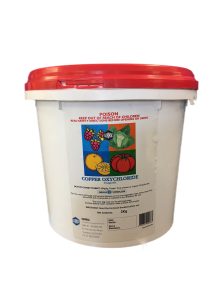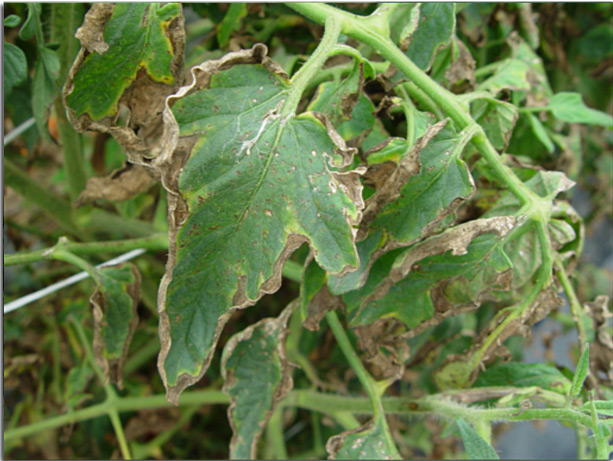
Bacterial Canker
Bacterial canker is caused by Corynebacterium michiganense pv. michiganense. Although usually sporadic in its occurrence, it is so destructive in nature that vigilance must be exercised in the selection and handling of seed stocks, the preparation and management of greenhouse soil beds or bags, and the selection and preparation of ground for field production. Bacterial canker is a vascular (systemic) and parenchymatal (superficial) disease with a wide array of symptoms resulting in loss of photosynthetic area, wilting and premature death, and the production of unmarketable fruit. Early recognition of the disease, especially in greenhouse crops, is essential if the disease is to be contained. The organism is seedborne and can survive for short periods in soil, greenhouse structures, and equipment and for longer periods in plant debris. Plants at any stage of growth are susceptible. Infected seedlings may be quickly killed, or they may produce weak, stunted plants, or if conditions are unfavorable for disease development, infected seedlings may develop into apparently healthy plants that fail to show disease symptoms until they are set in the field. The disease may not be observed until after the plants begin to blossom. The early symptoms of the disease are wilting, curling of leaflets, and browning of leaves, often only on one side of the plant. As the leaves die, the petioles remain green and firmly attached to the stem. A cut through the stem shows yellowish brown discoloration of the vascular element.
How to control Bacterial Canker
Copper Oxychloride

Copper Oxychloride is for the control of fungal and bacterial diseases in fruit and vegetable crops, citrus, stone fruit, pome fruit… Read More
Read more